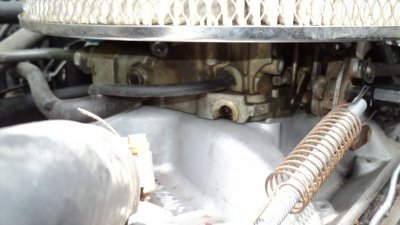[huge argument in part follows] Look, I'm 60 years old. I started playing with cars in 1969 at age 16, on cars from the early 60's. No such thing as ported vacuum. All vacuum advance units connected to manifold vacuum. Why? Because that's where they go.
When did ported or timed vacuum come in? With emissions controls. You know, the stuff that lowered compression and horsepower and performance and throttle response while cleaning up emissions in the 150 million or so cars on the road. Why? Because they measured idle emissions, because cars sitting in traffic jams in LA and DC and NYC were causing lots of pollution. And running retarded at idle helps that. It lets some of the charge into the manifold while it is still burning, which runs the exhaust manifold hotter and gives some after-burning of emissions in the manifold.
So, if you want better performance and throttle response, and you aren't going to be sitting in traffic jams in LA or DC or NYC for hours, and you don't need to undergo emissions testing, then use manifold vacuum.
Another data point. If you look at Edelbrock carb diagrams, the ports are labeled "timed vaccum (Distributor vacuum advance port for emissions controlled engines)" and "manifold vacuum (Distributor vacuum advance port for non-emissions controlled engines)".
Or you could read this:
http://www.corvetteactioncenter.com...ported-vs-manifold-source-vacuum-advance.html
Or you could, just maybe, you know, for grins, and to prove me wrong, take five seconds to pull the vacuum advance line off the ported vacuum port and connect it to the manifold vacuum port, and then drive it for a while. Notice how crisp the off-idle response is now? Hmm?


 1 was firing order was wrong, and 1 was retarded timing.
1 was firing order was wrong, and 1 was retarded timing. 

 TOADJA !!! NEVER ASK where to hook up Vacuum Advance on a forum !!! NEVER
TOADJA !!! NEVER ASK where to hook up Vacuum Advance on a forum !!! NEVER
 I haven't been on a forum yet that this subject hasn't come up and everyone has a different opinion. I just about consider this topic like politics and religion. Just don't bring it up.
I haven't been on a forum yet that this subject hasn't come up and everyone has a different opinion. I just about consider this topic like politics and religion. Just don't bring it up. 